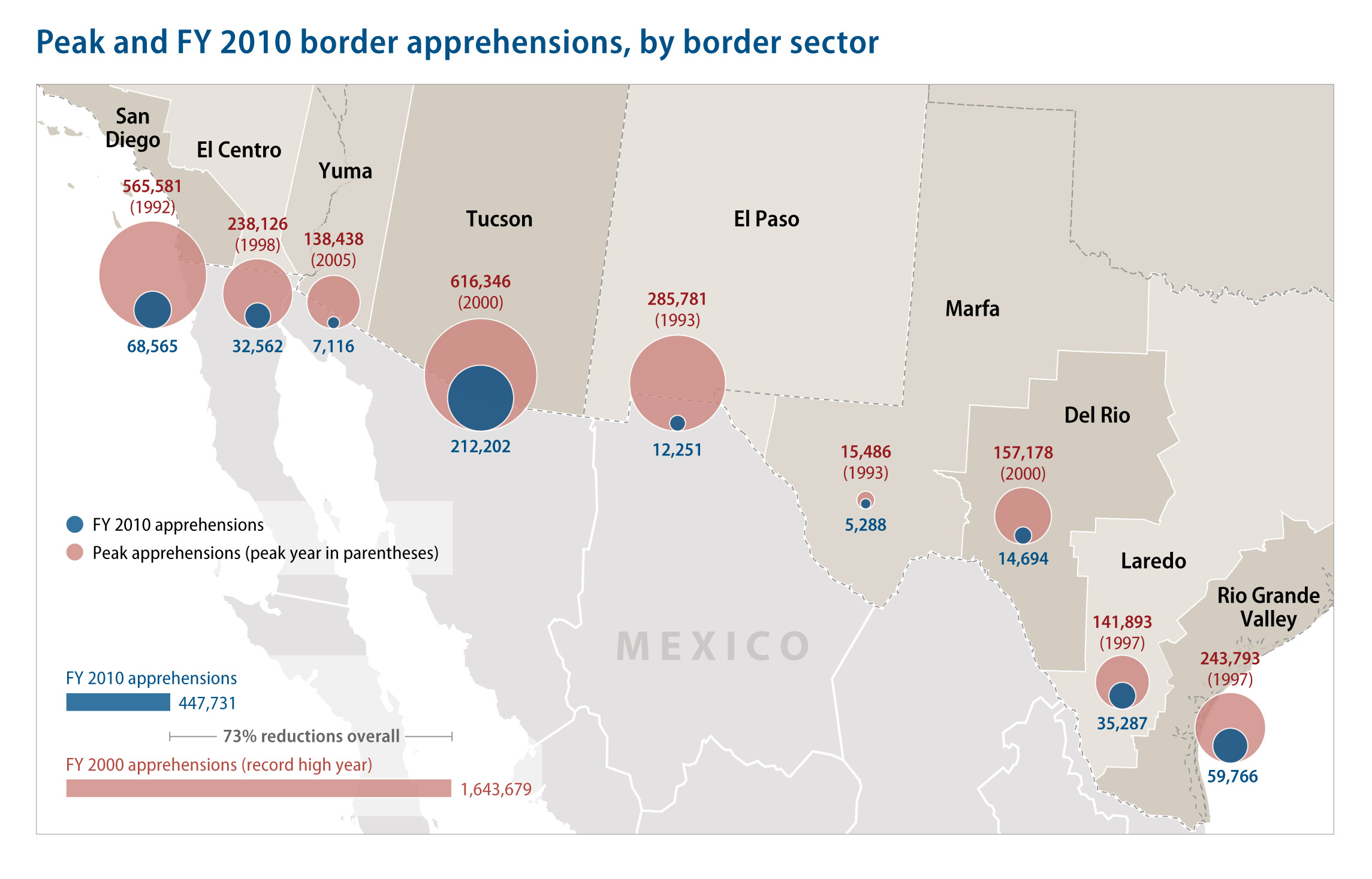Read the full report here.
Washington, D.C. – Despite the conservative “border security first” rhetoric—the primary obstacle to comprehensive immigration reform – a recent USA Today article shows that border communities are safer on average than U.S. cities and a New York Times report suggests that net illegal immigration from Mexico may now be at zero. These findings underscore those in the Center for American Progress report, “Safer than Ever: A View from the U.S. – Mexico Border,” released in conjunction with the CAP event today “The State of U.S./Mexico Border Security,” both discussing the achievements made in reducing unlawful entries across the border and renewing the call for comprehensive legal reform—the absence of which has triggered a number of unintended and counterproductive consequences.
As a result of increased DHS personnel along the southern border and a number of major improvements in technology and infrastructure, the Border Patrol can more effectively monitor the border and curb the flow of unauthorized crossings. Examples of the unprecedented resource deployment include:
- The amount of Border Patrol agents has doubled since 2004—now we have nearly 21,000, 18,000 of whom are deployed along the southern border.
- A quarter of Immigration and Customs Enforcement officers are now deployed along the southern border with double their previous number of personnel assigned to the Border Enforcement Security Taskforces, focusing on disrupting criminal organizations.
- President Obama has deployed and extended the mission of 1,200 National Guard troops to assist local law enforcement identify smugglers with sophisticated Defense Department technologies and fill manpower gaps.
- DHS has completed nearly 650 miles of fencing, including 300 miles of vehicle barriers and 350 miles of pedestrian fencing.
- The use of advanced detection technologies, including remote video surveillance systems, mobile surveillance, and thermal imaging systems, has been broadly expanded by DHS, enabling officers to monitor a broader swath of the border in real time, despite the difficulties that stretches of high density areas and rocky terrain present.
The map below, included in the Center for American Progress report, presents the number of apprehensions sector by sector, as defined by the Border Patrol, over time to demonstrate how the massive investments in manpower and infrastructure have altered migration flows, while highlighting the challenges that remain.

The decreases in Border Patrol apprehensions reflect a dramatic downturn in attempted entries. In the San Diego sector, for example, there were more than 565,000 in 1992. By 2000, with significant fencing in place and increased manpower, that number had dropped to 151,000. Though in 2000, El Centro had 238,000 apprehensions and Yuma had 110,000, they dropped to 32,000 and 7,100 respectively, by FY 2010. Challenges in the Tucson sector persist, with 212,000 apprehensions though experiencing a decrease of more than 400,000 between 2000 and 2010.
With pressure on the border diminished by these enforcement efforts and the severe economic downturn, we have a unique opportunity to develop forward-looking immigration and border policies. If we fail to reform our legal system, however, we can expect the unintended by-products of this singular focus on enforcement to worsen when the economy improves. Attempting to choke off migration without providing alternative legal pathways to channel some level of legitimate economic migration has led to a number of perverse results. These counterproductive results include:
- Longer wait times for pedestrian and vehicular crossings, due to higher scrutiny of cross-border traffic, deters money being spent in the United States, have hurt U.S. businesses and workers that rely on this revenue from Mexico—our nation’s second-largest trading partner.
- The cost and danger of crossing have caused migrants to deepen their roots, rather than continuing the once-circular flow of economic migrants between the U.S. and Mexico.
- Intending economic migrants have been pushed into the orbit of violent crime syndicates and ruthless drug cartels control virtually all illicit cross-border traffic now, including human smuggling.
- Increased government control over vast swaths of the border has caused a relocation of entry points to more remote and more dangerous junctures; literally thousands of people have died attempting to cross the border since this buildup began.
- Migrants are more easily forced into engaging in other illegal activities to escape the prospect of execution or violent reprisals against their families, as a result of the necessity of using a smuggler to cross in more dangerous areas and the monopolization of the market by cartels.
Now is the time to construct an immigration system that preserves the gains in control while disaggregating beneficial migration from the violent drug trade.
Read the full report here.
Related reports:
To speak with CAP experts, please contact Christina DiPasquale at 202-481-8181 or [email protected].
###